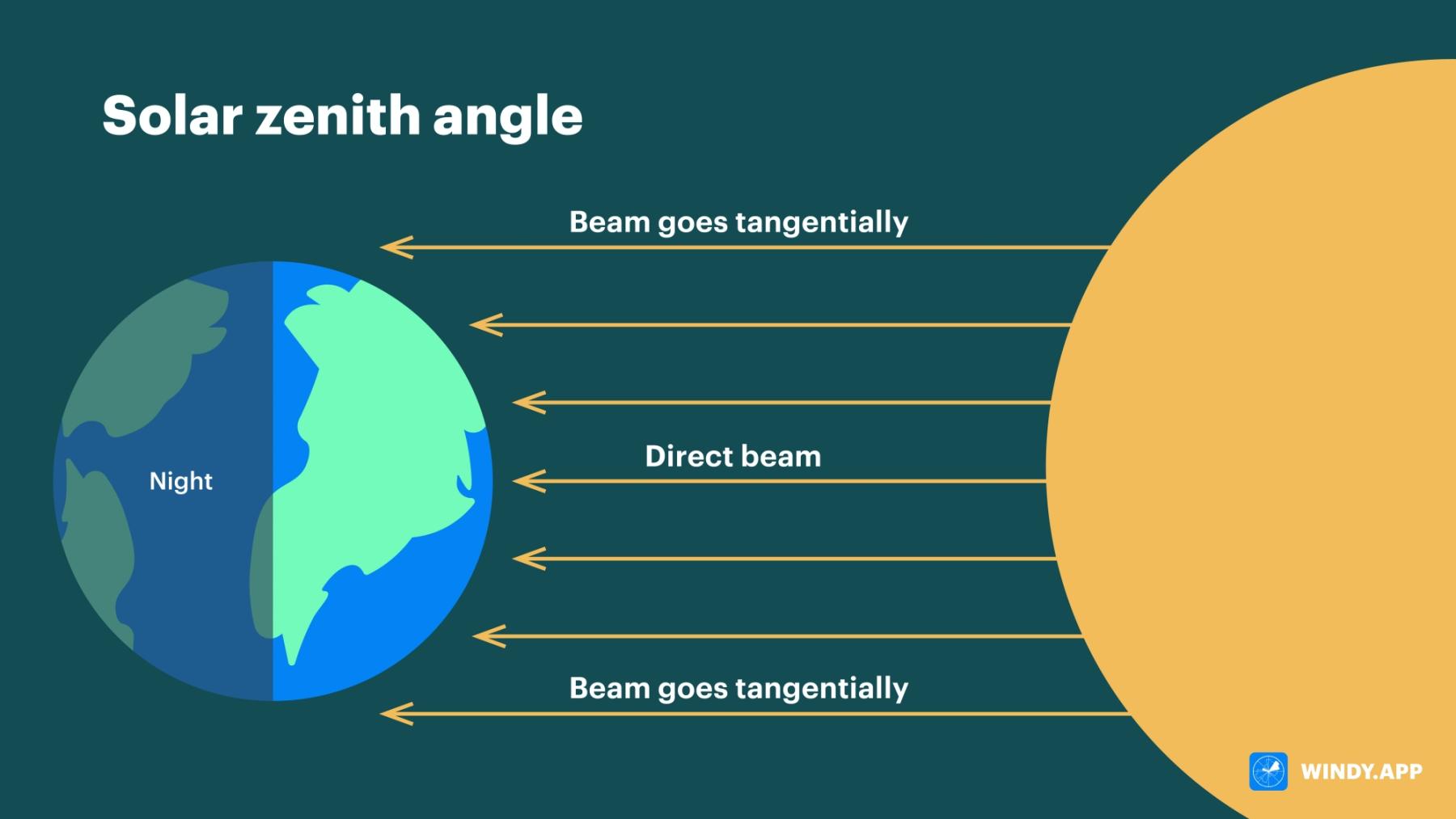
What does the air temperature depend on
It is important to keep in mind that the air is not heated by the Sun itself, rather it absorbs the heat from the surface of the ground. In this new lesson of the Windy.app Meteorological Textbook (WMT) and newsletter for better weather forecasting you will learn more about air temperature.
Meanwhile, the degree to the which the ground can be heated depends on several factors:
- the amount of solar irradiation, which varies with the angle at which the sunlight reaches the Earth
- the distance between the Sun and the Earth (seasonal differences)
- the type of the esurface (plain, rough, dark or light etc.)
- cloudiness.
Solar zenith angle
The closer this angle is to 90 degrees, the more heated is the ground and, consequently, the air. The more acute the angle, the less heat it obtained. This explains why the temperatures are unstable even along the same latitude. They change according to the change in sun angles.
The shape of the Earth is close to spherical and the axis is slightly tilted. We already know, that on equator the sunbeam strikes the Earth at a 90 degree angle at noon, while only lightly touching the poles. Thereby, the equator receives the most sunlight and heat all year long. The closer to the equator, the higher the temperature of the air. The opposite is true for the poles.
For instance, in the afternoon, when the sun begins to set, the air will continue to receive the heat up until sunset. Then, gradually the surface will start cooling down and the air temperature will drop.

Solar zenith angle. Valerya Milovanova / Windy.app
The surface
Water heats up and cools down slower than the ground. The highest air temperature over the World Ocean in the northern hemisphere is registered in august, while the lowest-in february.
Different types of surfaces might not only absorb solar energy, but also reflect it. The measure of the reflection of solar radiation is called albedo. Let's say that a certain surface receives direct sunlight, a 100%. Granite absorbs 53% while reflecting 47%, unlike sand which absorbs 32% of the light and reflects 68%.
One of the highest levels of albedo is characteristic for the snow, 80-85%. It may attribute to the difference in temperatures in cities and suburbs in winter. Snow on the streets of the cities is either removed from the streets or to polluted to reflect a lot of sunlight, hence the low level of albedo. In the suburbs the snow is clean and has a high level of albedo, which brings the temperatures down.
Color also affects the degree of heat absorption. The darker the surface color, the faster it is heated by the sunlight, which is in a way characteristic of albedo.
During the course of the day the highest air temperature is reached by 2-3 pm and is lowest right before the sunrise. The hottest month in the northern hemisphere is july, the coldest is january. And vice versa for the southern hemisphere.
Cloudiness
This is a very important factor that affects the temperature. What should be noted:
- Different types of clouds have different modes of interaction with the solar radiation, depending on the density and the state of matter in the clouds (ice crystals, water droplets, etc). For example, in winter those clouds that contain ice crystals will be reflecting more sunlight, hence, lowering the air temperature.
- During the night clouds act as a blanket that traps the heat, which “reflects” back down from the clouds. However if the night is cloudless (often characteristic of anticyclones) then the ground loses a lot of heat and the air temperature in the morning is low.
Text: Windy.app team
Cover photo: Unsplash
You will also find useful
Latest News
Professional Weather App
Get a detailed online 10 day weather forecast, live worldwide wind map and local weather reports from the most accurate weather models.
Compare spot conditions, ask locals in the app chat, discover meteo lessons, and share your experience in our Windy.app Community.
Be sure with Windy.app.



